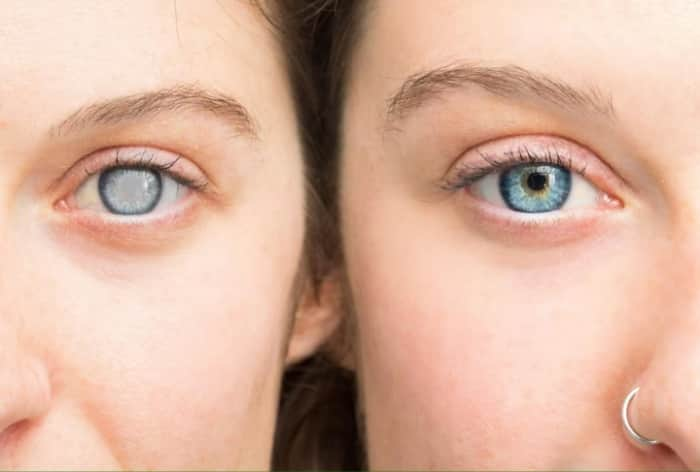Cataract is a common eye problem that usually developes with age. But can it re-occur post operation? Expert answers common questions about cataract.

Cataract is basically the clouding of the lens which is almost like looking through a foggy glass. As a rite of passage, we age and so do our body’s mechanisms. With the myriad of health issues that entail with aging, cataract ranks as one of the common eye problems. cloudy eyes makes it difficult to read and write. But what causes this develope? Is there a chance they it may form again post surgery? Are women at higher risk of developing it?
There is a slew of questions that further comes along with this issue. What is better than getting an expert’s opinion and clear the air. India.com got in touch with an eye expert to put an end to all the myths and dilleman. Dr. Supriya Sriganesh, Executive Director, Nethradhama Super Speciality Eye Hospital, Bangalore, answers all FAQs about cataract.
Can children develop cataract?
Cataract is a medical condition characterised by the clouding of the lenses in the eyes. It is a natural part of the aging process when the eye’s lens loses its transparency. However, cataracts can also occur prematurely due to eye injuries, exposure to radiation and UV rays, and diseases such as diabetes. It can occur prematurely in children at birth or even later. Cataracts develop in children after birth due to various factors such as trauma, infections or certain diseases in the mother. Congenital cataract is a condition where the lens of the eyes is cloudy instead of being clear during birth, making them opaque.
Does your eye become more sensitive if you develop cataract at an early age?
The sensitivity to bright light can increase with development of cataract at any age. Patients may experience more glare and difficulty in night driving and other low light situations. However, most cases of age related cataract are painless and slowly progressive where the patient does not experience much discomfort apart from visual disturbances.
Can cataract re-develop post-surgery?
Once a cataract has been removed surgically, it cannot grow back. Cataracts do not recur or grow back after a successful surgery. However, patients may develop a condition known as Posterior Capsule Opacification (PCO) in due time post the surgery, where a layer of cells develops behind the lens, causing blurred vision. Posterior Capsule Opacification can be easily corrected by polishing of the lens using a laser, known as YAG laser capsulotomy. This is a painless, out-patient procedure which is done within 10 minutes.
Does more screen time lead to early onset of cataract?
The duration of screen time is not directly related to development of cataracts. However, prolonged screen time in children can lead to progression of myopia, and cataract formation can occur earlier in high myopic patients.
Who is at higher risk of developing cataract?
According to studies, women are at a slightly higher risk of developing cataracts than males. This could be due to post-menopausal declining levels of estrogen and a longer life expectancy. Globally, women have a higher cataract burden than men. Older age and lower socio-economic status are associated with greater differences in rates of cataract by sex.
Can cataract be dissolved naturally?
The only effective treatment for cataracts is surgery. Unlike other eye conditions, cataracts cannot be treated or dissolved with eye drops or any other medications. Phacoemulsification and laser surgery has now been accepted as the gold standard of surgical procedure for the management of cataract. Once the cataract is removed, vision may be corrected with eyeglasses or lenses. With technological advances, most patient can opt for spectacle independence after cataract surgery.
Phacoemulsification is the gold standard for cataract surgery today. It is a minimally invasive surgery to remove cataracts. The process employs ultrasound energy in the form of high frequency sound waves, to emulsify the nucleus of the clouded lens (cataract) into a gelatinous mass. The mass is then suctioned out of the eye with a vacuum (aspiration). The procedure is completed by replacing the cataract with an IOL (intraocular lens).

